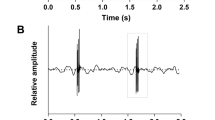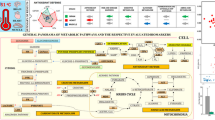Abstract
Recessing and righting behaviour requires a big energetic cost to scallops and if the animals are already weakened by the stress of handling, exposure to air and transport they may find if difficult to carry out these manoeuvres. The objectives of this study were to determine the preferred sediment of scallop (Pecten maximus) spat and to determine the recessing and righting behaviour of spat under a dessication stress. The results showed that the time taken to recess was indirectly proportional to the mean sediment size of the sediment. When using the 'preferred' sediment, recessing and righting speed was indirectly proportional to the degree of exposure to air experienced by the animals. Thus by removing seasonal and size variables we were able to demonstrate a clear relationship between quality and behaviour in juvenile scallops. This test is therefore not only sensitive to changes in spat quality but is also a very quick and simple test to perform.
Similar content being viewed by others
References
Baird, R.H. 1958. On the swimming behaviour of scallops (Pecten maximus L.). Proceedings of the Malacological Society of London 33, 67–71.
Brand, A.R. 1991. Scallops ecology: distributions and behaviour. In: Scallops: Biology Ecology and Aquaculture, S. Shumway (ed.), Developments in Aquaculture and Fisheries Science 21, 517–584.
Dhert, P., Lavens, P. and Sorgoloos, P. 1992. Stress evaluation: a tool for quality control of hatchery-produced shrimp and fish fry. Aquaculture Europe 17, 6–10.
Fleury, P.G., Mingant, C. and Castillo, A. 1997. A preliminary study of the behaviour of reseeded juvenile great scallops of three sizes in three seasons. Aquaculture International 4, 325–337.
Hartnoll, R.G. 1967. An investigation of the movement of the scallop, Pecten maximus. Helgolander Wissenschaftliche Meeresuntersuchungen 15, 523–533.
Thompson, R.J. and MacDonald, B.A. 1991. Physiological interactions and energy partitioning. In: Scallops: Biology Ecology and Aquaculture, S. Shumway (ed.), Developments in Aquaculture and Fisheries Science 21, 347–376.
Tyurin, A.N. 1991. Behavioural reactions of the scallop, Mizuhopecten yessoensis, and the mussel, Crenomytilus grayanus, to reduced salinity and oxygen and exposure to synthetic detergents. Journal of Hydro Biology 24,4: 13–19.
Author information
Authors and Affiliations
Corresponding author
Rights and permissions
About this article
Cite this article
Maguire, J.A., O'Connor, D.A. & Burnell, G.M. An Investigation into Behavioural Indicators of Stress in Juvenile Scallops. Aquaculture International 7, 169–177 (1999). https://doi.org/10.1023/A:1009291323103
Issue Date:
DOI: https://doi.org/10.1023/A:1009291323103




